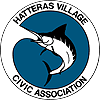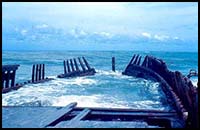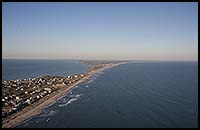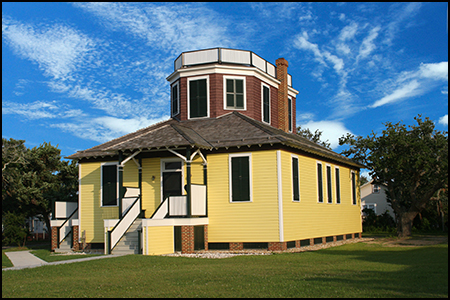
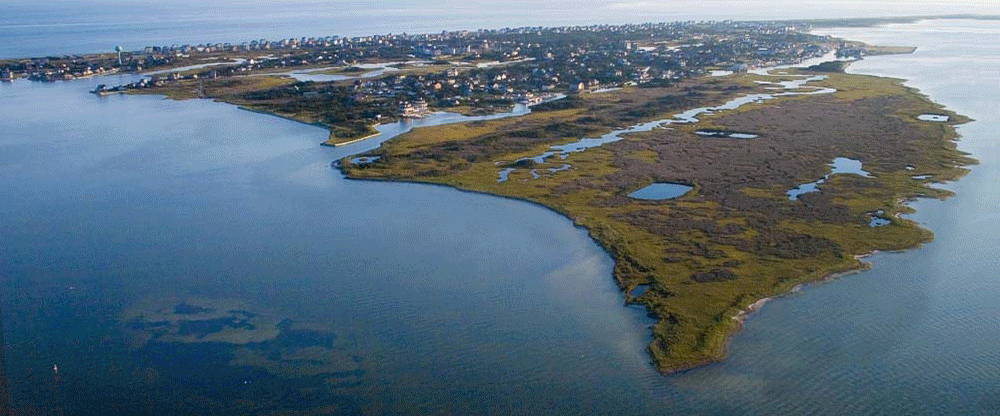
| |
|||||||||||||
 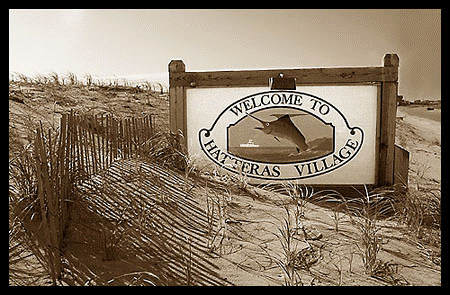 Hatteras
Village
is located on Hatteras Island, one in a chain of islands on the North
Carolina coast comprising the famous Outer Banks. Since
arriving
here in the 1700s, the people of Hatteras have depended on the natural
environment for their livelihood. Evolving from a small
commercial fishing village to a major Gulf Stream sportfishing
attraction, Hatteras continues to rely on its fertile fishing grounds
to support its economy. Surrounded by this gift of nature,
Hatteras Village today is a world famous tourist attraction with a
unique history and culture. Her pristine beaches and
waterways provide the perfect backdrop for any vacationer's
dream. Hatteras
Village
is located on Hatteras Island, one in a chain of islands on the North
Carolina coast comprising the famous Outer Banks. Since
arriving
here in the 1700s, the people of Hatteras have depended on the natural
environment for their livelihood. Evolving from a small
commercial fishing village to a major Gulf Stream sportfishing
attraction, Hatteras continues to rely on its fertile fishing grounds
to support its economy. Surrounded by this gift of nature,
Hatteras Village today is a world famous tourist attraction with a
unique history and culture. Her pristine beaches and
waterways provide the perfect backdrop for any vacationer's
dream.Two important trails transect the Village....one is The Outer Banks Scenic Byway. Centered
around a rich village culture, the Outer Banks Scenic Byway is a must
for any traveler looking to escape to a time of front porch talks and
simple maritime living. On the byway at Hatteras
Island, a
“beach vacation” landscape with outstanding recreation, there are seven
villages surrounded by national seashore of which this village is one.
Historic settlement patterns are visible in ancient live oaks, harbors,
old houses, family cemeteries, simple churches, family stores, fish
houses, and 19th-century life-saving stations.
The other trail is A Civil War Trail which is part of a national network that commemorates that tragic time in our Nation’s history. On
August 28, 1861, the residents of Hatteras Village awakened to the
sight of a large Federal fleet anchored off their coast. At about 10
a.m. the peaceful and tranquil life of Hatteras Village was shattered
by the sound of the large naval guns of a Union fleet firing on two
Confederate forts which were under construction at Hatteras Inlet.
Forts Hatteras and Clark were relatively small earthwork forts,
constructed by slave labor and made of brush, sand, lumber and peat.
John Rollinson, a local resident of Hatteras Island at the time, wrote
in his journal that the Confederate soldiers first arrived at Hatteras
on May 9, 1861, one month after the Civil War began. Several months
later it fell to Union forces.
In 1948, a regional newspaper, The Coastland Times, published an article praising the unspoiled nature of Hatteras Village, noting that "the little town is built on no general lines”. As the article stated, Hatteras developed slowly over time, with no plat, no lots neatly laid out, and no grid plan. Today, the roads weave and wander through the town, with lanes following what once were paths to people's houses. There are no sidewalks and few streetlights. The town developed as a result of its natural harbor and its location on Hatteras Island. By the early 1780s, there was a small settlement at Hatteras village located in protected wooded tracts on the sound side of the island. Today the Village still maintains much of the charm of her past while providing the comforts of the present as a world class cultural and vacation destination. |
 If
you are looking for a fun filled vacation, a place to raise your family
or a place to spend your retirement years then you are at the right
place. From fishing to surfing, water
activities are
unlimited. From the solitude of strolling miles of
undeveloped
beaches unlike anything else in NC to enjoying small community
life,
Hatteras Village is the place of your dreams.
|
||||||||||||
Hatteras Designs, Inc.

